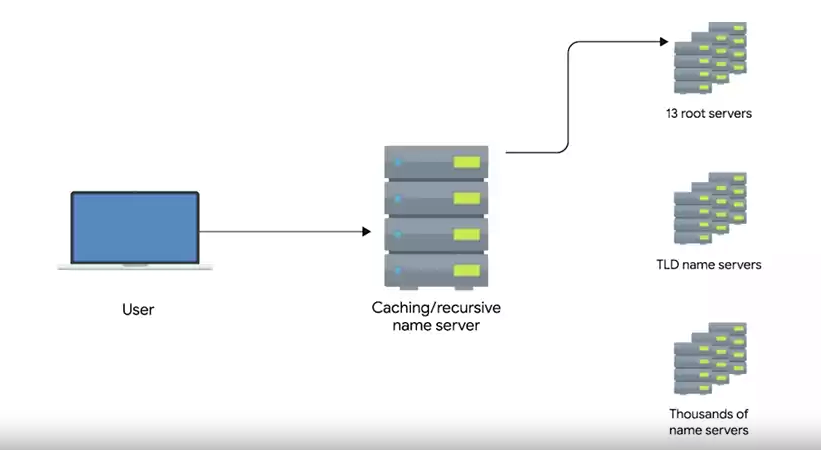Computers only understand 1 and 0.
DNS (Domain Name System) – A global and highly distributed network service that resolves strings of letters into IP addresses for you.
The IP address for a domain name can also change all the time for a lot of different reasons. A domain name is just the term we use for something that can be resolved by DNS.
DNS make it easier for humans to remember how to get to a website, it also lets administrative changes happen behind the scenes without an end-user having to change their behavior.
DNS let’s organizations decide if you’re in the region, resolve the domain name to this IP. If you’re in this other region, resolve this domain to this other IP.
Standard Modern Network Configuration
- IP Address
- Subnet mask
- Gateway for a host
- DNS server
Five Primary Types of DNS Servers
- Caching name servers
- Recursive name servers
- Root name servers
- TLD name servers
- Authoritative name servers
Caching and recursive name servers
- are generally provided by an ISP or your local network. Their purpose is to store domain name lookups for a certain amount of time.
- Most caching name servers are also recursive name servers.
- Recursive name servers are ones that perform full DNS resolution requests.
TTL (Time to Live)
- All domain names in the global DNS system have a TTL or time to live.
- This is a value, in seconds that can be configured by the owner of a domain name for how long a name server is allowed to cache an entry before it should discard it and perform a full resolution again.

Anycast
- a technique that’s used to route traffic to different destinations depending on factors like location, congestion or link health.
- Using Anycast, a computer can send a datagram to a specific IP, but could see it routed to one of many different actual destinations depending on a few factors.
TLD
- TLD stands for top-level domain and represents the top of the hierarchical DNS name resolution system.
- A TLD is the last part of any domain name using www.facebook.com as an example again, the.com portion should be thought of as the TLD.
- For each TLD in existence, there is a TLD name server.
Authoritative Name Servers
- Authoritative name servers are responsible for the last two parts of any domain name, which is the resolution at which a single organization may be responsible for DNS lookups.
- Using www.weather.com as an example, the TLD name server will point a lookup at the authoritative server for weather.com, which would likely be controlled by the weather channel, the organization itself that runs the site.
- Finally, the DNS lookup could be redirected at the authoritative server for weather.com, which would finally provide the actual IP of the server in question.
This strict hierarchy is very important to the stability of the Internet. Making sure that all full DNS resolutions go through a strictly regulated and controlled series of lookups to get the correct responses is the best way to protect against malicious parties redirecting traffic.
Leave a Reply